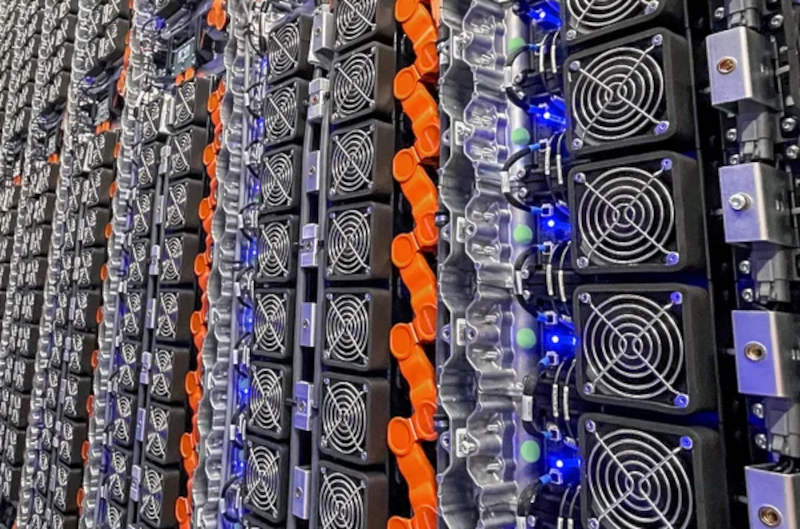While it sounds like the start of a joke, Australian shipmaker Incat Tasmania isn’t kidding around about electric ships. Hull 096 has started charging, although it has only 85% of the over 5,000 lithium-ion batteries it will have when complete. The ship has a 40 megawatt-hour storage system with 12 banks of batteries, each consisting of 418 modules for a total of 5,016 cells. [Vannessa Bates Ramierz] breaks it down in a recent post over on IEEE Spectrum. You can get an eyeful of the beast in the official launch video, below. The Incat Tasmania channel also has other videos about the ship.
The batteries use no racks to save weight. Good thing since they already weigh in at 250 tonnes. Of course, cooling is a problem, too. Each module has a fan, and special techniques prevent one hot cell from spreading. Charging in Australia comes from a grid running 100% renewable energy. When the ship enters service as a ferry between Argentina and Uruguay, a 40-minute charge will be different. Currently, Uruguay has about 92% of its power from renewable sources. Argentina still uses mostly natural gas, but 42% of its electricity is sourced from renewable generation.
The ship is 130 meters (426 feet) long, mostly aluminum, and has a reported capacity of 2,100 people and 225 vehicles per trip. Ferry service is perfect for electric ships — the distance is short, and it’s easy to schedule time to charge. Like all electric vehicles, though, the batteries won’t stay at full capacity for long. Typical ship design calls for a 20-year service life, and it’s not uncommon for a vessel to remain in service for 30 or even 40 years. But experts expect the batteries on the ferry will need to be replaced every 5 to 10 years.
While electric ferries may become common, we don’t expect to see electric cargo ships plying the ocean soon. Diesel is hard to beat for compact storage and high energy density. There are a few examples of cargo ships using electric, though. Of course, that doesn’t mean you can’t build your own electric watercraft.
















Not a maritime expert by any means but isn’t weight at a premium in boats? I thought that’s why electric boats haven’t picked up. Wouldn’t a lithium pack reduce the weight the boat can handle
I came here to say basically the opposite. Ships need ballast. Are batteries dense enough, or there’s still a need for development into higher density batteries?
Maybe we can exploit iodine chemistry there.
I saw some small boats come by the last few summers that were electric, and it’s so nice, you can relax and not have the noise at the same time, while at an easy pace getting somewhere.
Sails you need to watch and manage and small combustion motors are noisy.
Ferries typically have a ballast capacity that can range from
around 20% to over 40% of its deadweight tonnage (DWT). Sand, Concrete, or Lithium, the only difference is density.
The reason you don’t see electric boats everywhere is mostly endurance, that huge expensive battery sounds like mind boggling energy storage but when it comes to pushing lots of water out of your way for many weeks on the longer shipping journeys you need much more energy than that. And even if you could pack enough energy into batteries onboard for those longer journey most boat will do the ports don’t want your boat stuck there for a few days, maybe even a week or two recharging to go away (your battery might be able to recharge faster, but is there the dockside infrastructure to recharge it that quickly?).
This sounds like it’s pure electric, compared to other vessels like Wightlink’s Victoria of Wight (https://en.wikipedia.org/wiki/MV_Victoria_of_Wight) which just seems to use the batteries to reduce in port emissions.
Wow. That’s going to be one huge salvage bill for some lucky entrepreneur.
“Currently, Uruguay has about 92% of its power from renewable sources. Argentina still uses mostly natural gas, but 42% of its electricity is sourced from renewable generation.”
I mean… Argentina is 15 times larger than Uruguay and not all of Argentina is next to one of the largest rivers in the world
Uruguay also produced 7000 GWh of hydro while Argentina produced 30000 GWh
silly comparison lol
No racks seems like a problem, although batteries aren’t rice so they don’t slosh. I’ve built electric boats but for single digits number of people so I’m a bit out of my element here :)
water and lithium batteries….what could possibly go wrong??
I hope nothing, but I wouldn’t be comfortable on this.